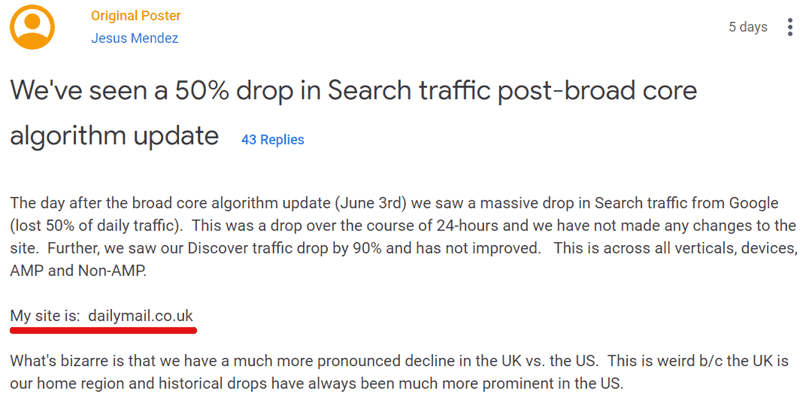The Google E-A-T Update: What You Need to Know
— July 10, 2019
If you follow the latest SEO news to any extent , you’ll have seen the acronym E-A-T in recent months. Google first introduced the concept back in 2015 but, despite some early interest, talk about E-A-T faded away from popular SEO topics.
So why the sudden surge in interest again?
It all comes down to Google recently updating its search quality guidelines and, perhaps more importantly, a core algorithm update that makes Google more capable of enforcing those guidelines – an update that shook the SERPs harder than we’ve seen for years.
Here’s what you need to know.
A brief history on Google E-A-T
Back on November 12, 2015, Google published its Search Quality Evaluator Guidelines for the world to see. While these guidelines are designed for its team of human evaluators to judge the quality of Google Search results, they offered the most comprehensive insight into how Google measures content quality.
When Google first released these guidelines, it made a real stir in the marketing industry. It was as if the search giant had suddenly revealed its most coveted secret and handed over the key to SEO success for marketers everywhere.
The most talked-about element of the guidelines was the concept of expertise, authoritativeness and trustworthiness or E-A-T.
Why the sudden surge in interest again?
It comes down to a combination of Google updating its search quality guidelines and a recent core algorithm update that rocked the SERPs. The Daily Mail reported a 50% drop in search traffic following the June 3rd core update, which Google announced the previous day.
 A Daily Mail employee posted this message on the Google Webmaster Help Forum following the June core algorithm update.
A Daily Mail employee posted this message on the Google Webmaster Help Forum following the June core algorithm update.
Naturally, when any algorithm has this kind of impact, people take notice – especially when such an established name takes a heavy hit.
E-A-T has been playing a gradually stronger role in Google’s core algorithm since August last year. Health and medical sites were hit hardest during the August 2018 core update but this has since expanded to most industries.
There are two key things that have happened since the Google E-A-T guidelines were introduced in 2015. First, there was the rise of fake news, which has forced the likes of Google and Facebook to reassess how they deliver trustworthy content to users. Then there’s the fact that Google’s technology has matured over the past four years and its ability to accurately measure the expertise, authoritativeness and trustworthiness of content has greatly increased.
Either way, the bar has been raised significantly for content creators.
What do I need to know about the Google E-A-T update?
First of all, E-A-T isn’t a ranking factor or a metric (or, at least, this hasn’t been confirmed). Instead, it’s a guideline Google provides human evaluators to judge the quality of its search results, but this still gives us a lot of clues about what Google is looking for from content and web pages.
So what does Google itself say about E-A-T? You can find the full explanation in its Search Quality Evaluator Guidelines.
Here’s a summary:
“For all other pages that have a beneficial purpose, the amount of expertise, authoritativeness, and trustworthiness (E-A-T) is very important. Please consider:
- The expertise of the creator of the MC.
- The authoritativeness of the creator of the MC, the MC itself, and the website.
- The trustworthiness of the creator of the MC, the MC itself, and the website.
Keep in mind that there are high E-A-T pages and websites of all types, even gossip websites, fashion websites, humor websites, forum and Q&A pages, etc. In fact, some types of information are found almost exclusively on forums and discussions, where a community of experts can provide valuable perspectives on specific topics.”
Expertise is one area where Google has become more strict after recent updates. The search giant wants to see content from proven experts where necessary, this is where a lot of cryptocurrency websites have been hit by E-A-T recently.
Most of these websites are very new, putting them at a disadvantage when it comes to authoritativeness. Many are publishing content written by people with no financial background whatsoever, telling people how to invest their money.
Not all websites require expert knowledge though – something Google explicitly states in its guidelines:
“Some topics require less formal expertise. Many people write extremely detailed, helpful reviews of products or restaurants. Many people share tips and life experiences on forums, blogs, etc.”
“These ordinary people may be considered experts in topics where they have life experience. If it seems as if the person creating the content has the type and amount of life experience to make him or her an “expert” on the topic, we will value this “everyday expertise” and not penalize the person/webpage/website for not having “formal” education or training in the field.”
The other area where websites are really getting hit is in the trustworthiness department – and could this be where the Daily Mail was hurt? The publication clearly has the clout and budget to get expert writers on board but its reliability has come under question in recent years.

Microsoft’s Edge browser warned users attempting to visit the Daily Mail earlier this year, but the Newsguard algorithm powering the feature was promptly changed to remove the Daily Mail from its blacklist.
In 2017, Wikipedia editors also voted to ban the Daily Mail as a source for citing information.
Either way, we know Google has embarked on its own kind of fact-checking mission when it comes to measuring the reliability of content – a technology that’s been in development since 2015 or earlier. As this technology continues to mature, Google’s ability to measure the trustworthiness of content is only going to improve.
E-A-T back on the agenda
The truth is E-A-T has been an SEO priority for many years but Google has now cranked up the role it plays in search rankings. The impact has been significant too, which is why everyone is talking about it again.
Google’s algorithm is more capable of understanding concepts like trustworthiness than it was when its quality guidelines were first published in 2015 and this has been reflected in recent updates. Essentially, the bar has been raised and Google’s technological advances mean it’s able to enforce its own rules more effectively.
The good news is these guidelines give us a relatively clear idea of what Google is looking for in quality content – so no excuses left really.
Digital & Social Articles on Business 2 Community
(8)


